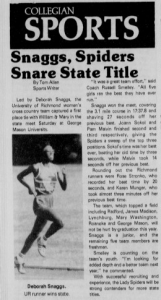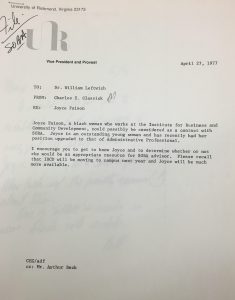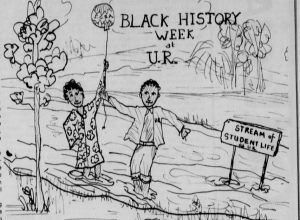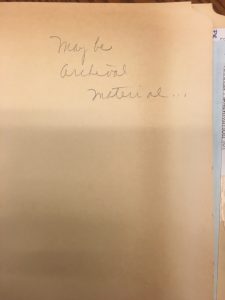By Joshua Kim
“Don’t call me a Spider!”
In the year 1941, the University of Richmond found itself embroiled in a fierce debate as to whether or not they should ditch the campus symbol — the Richmond Spider — to become the Confederates.
This proposal was introduced by alumnus W.F. “Tip” Saunders (’13), who believed that the Spider symbol was inadequate. Instead, he believed that the university should be known as the Confederates inspired by Richmond’s status as the capital of the Confederacy during the Civil War in 1861.
Saunders argued that the name matched the university, as it once was used as a hospital for Confederate soldiers, and also because alumni from the university had enlisted in the war to fight on the Confederacy’s behalf (Collegian, 1941).
When I first began reading the article, I expected it to contain multiple voices supporting the brand change. Instead, what I found was a campus split between change and tradition.
Saunders found support in multiple places. Much of his support came from local sports writers in downtown Richmond who agreed that, “…by use of the Confederate flag and yell, color would be added to the game…” (Collegian, 1941).
In addition to support from local sports writers, Saunders found support within the campus sports structures, specifically with Coach Thistlethwaite, head coach of the University of Richmond, who said, “I’d be proud to be called a ‘Rebel’ and proud to have my team called Rebels” (Collegian, 1941).
This support is very telling of the times as racism and segregation were very much the norm since Plessy v. Ferguson (1896), which legally upheld racial segregation in public facilities in its infamous “separate, but equal” doctrine.
Jim Crow laws began flourishing under Plessy v. Ferguson, and African Americans found themselves suffering from unequal access to a variety of things to which white people had access — including a university-level education.
Despite this, Saunders found a surprising amount of pushback, specifically from the student body and alumni. As was reported in the Collegian, “In the student body, Mac Pitt, president, spoke for a large section when he said, ‘Spider born! Spider bred! Spider dead!’’ (Collegian, 1941).
I began to investigate further to reveal more about what eventually happened. What I found was different from what I had expected.
While this article does state that the Pitt spoke for a large section of the student body, upon further research I found this statement was a bit misleading. I discovered this through an article published on October 17, 1941, titled:
“Shall It Be ‘Rebels?”
“The undergraduate can leave college with Rebel banners, Rebel seals, newspaper clippings headed ‘Rebels.’ We think Rebels more appropriate, better headline material, and certainly better for newspapers and cheering. …a change for the better is always welcome” (Collegian, 1941).
From this excerpt, what I gained was that the change from Spiders to Confederates was not as highly contested within the student body as I had previously thought.
Alternatively, I found that true opposition lay with the alumni:
“Graduates of the University of Richmond probably will be hit harder by a change than undergraduates. Alumni walked away with their sheepskins as Spiders. They left with Spider banners, Spider seals; newspaper clippings headed ‘Spiders.’ They feel an attachment for the name that the average student will not have if he recognizes that the term has been officially forgotten” (Collegian, 1941).
I was both surprised and disappointed.
When I read of opposition to the proposed change, I had hopes that it was because of the sense of the history of racism “Confederates” evoked. Contradictory to my beliefs, both articles highly suggested that opposition came more from comfort and pride in tradition, rather than actual racial progress.
Regardless, it was very interesting to find how much our campus environment reflected the larger Richmond scope on race and race relations.
Although the articles did not necessarily weave a tale about race relations, we can gather much of the story ourselves through the silence, instead. These silences tell us that, in 1941, race was not a major part of these students lives, and in place were conversations on tradition, sports, and southern pride.
Joshua Hasulchan Kim is from Colonial Heights, Virginia. He is a sophomore at the University of Richmond who is double majoring in Journalism and French. Joshua is involved in various clubs on campus: He is the co-president of Block Crew dance crew, the opinions editor for the Collegian newspaper, and is the Co-Director of Operations for the Multicultural Lounge Building Committee. Joshua developed this blog post as part of his work on a Spring 2017 independent study (RHCS 387). He is currently expanding this research with the support of an A&S Summer Research Fellowship.





